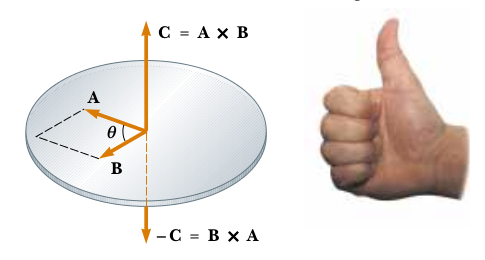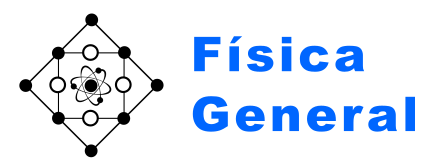Cross product¶
The second kind of vector product is the so-called cross product or external product that results in a vector. It can be denoted in two alternative (and completely equivalent) ways,
In this course we will normally use the first one.
Definition¶
The cross product is defined as,
that can be express in components using the cofactor expansion of the determinant (minor expansion) in the following way:
Geometric interpretation¶
The result of the cross product is a vector that (see Fig. Fig. 14):
is orthogonal to both initial vectors appearing in the product
its direction (sense) is given by the right-hand rule
its modulus is given in function of the modulii of \(\vec{a}\) and \(\vec{b}\) and the \(\sin\) of the angle they form (\(\theta\)):

Fig. 14 Illustration of the cross product¶
Properties¶
Some properties of the cross product are:
Distributive: The crossproduct of a vector times a sum of vectors can be expanded in the following way,
Product by a scalar: The result of multiplying a scalar times a cross product of vector is the same a multiplying only one of these vectors by the scalar
Anticommutative: When the order of the vectors involved in the cross product is changed, the value of the result does not vary but its sign is reversed
Product of a vector by itself: The result of cross multiplying a vector by itself is the null vector
Problems and solved examples¶
Show that the geometric properties of the cross product are correct
First we will show that the resulting vector of a cross product, \(\vec{a}\times\vec{b}\), is perpendicular to both \(\vec{a}\) and \(\vec{b}\).
This result is unchanged when using \(b\) instead of \(a\).
And at the end
This is the text of another problem
